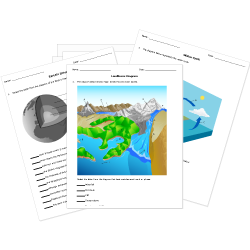In the Southwestern U.S., tectonic forces have pushed rocks upward over millions of years to form the Colorado Plateau. As the plateau has risen during this time, the Colorado River has been cutting down through the plateau to form the Grand Canyon.
Development of the Grand Canyon through the uplift of the plateau and erosion by the Colorado River illustrates that
-
landforms result from constructive forces only.
-
landforms result from a combination of constructive and destructive forces.
-
landforms result from neither constructive and destructive forces.
-
landforms result from destructive forces only.






